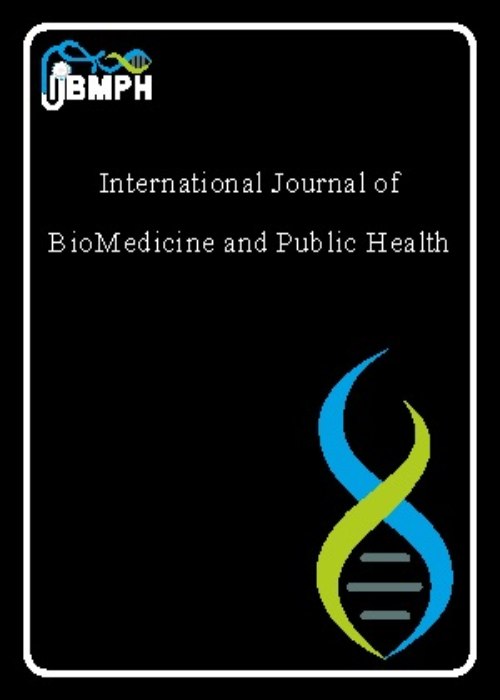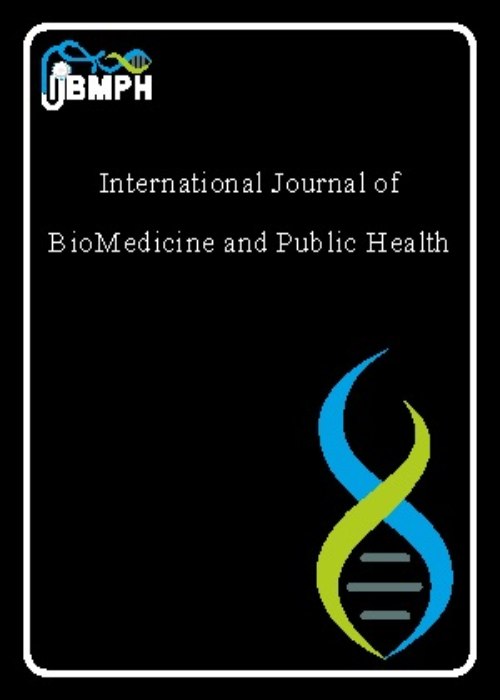فهرست مطالب

International Journal of Biomedicine and Public Health
Volume:2 Issue: 2, Spring 2019
- تاریخ انتشار: 1398/03/11
- تعداد عناوین: 2
-
Pages 37-40IntroductionPhenylketonuria (PKU) is caused due to a genetic disorder in amino acid metabolism and, if not detected and treated in a timely manner, results in mental retardation and psychological problems due to toxic effects of phenylalanine increase in the brain. The aim of this study was to investigate epidemiology of PKU in Kurdistan province.MethodsThis cross-sectional study was conducted to determine the incidence of PKU for all newborns born in 2012-2014 in Kurdistan province. Data collection was done through medical records of patients. The prevalence and relationship between variables were analyzed using Stata 12 software.ResultsThe incidence of PKU in the years 2012, 2013 and 2014 was 3.2, 2.3 and 2.9 per 10000 live births, respectively. The prevalence of PKU was higher in males than females and in the city as compared to the villages, though the differences were not significant (p> 0.05). Prevalence of PKU between consanguineous and non-consanguineous couples did not have a significant difference (p = 0.976). In this study, PKU cases were found to be higher in infants who were the first child of a family (44%).ConclusionThe prevalence of PKU in the Kurdistan province is relatively high and the importance of PKU screening and its consequences should be taken into account in the health education curriculum development.Keywords: Pphenylketonuria, Prevalence, Kurdistan province
-
Pages 41-45Introduction
Myocardial infarction is the most important cause of death in cardiovascular patients. Recently, biomarkers play a key role in the diagnosis of cardiovascular disease, including myocardial infarction. Several recent studies have suggested that microRNAs (miRNAs), including miR-21, play a pivotal role in acute myocardial infarction (AMI). Therefore, we aimed to investigate the expression levels of miR-21 in patients with AMI.
MethodsA total of 73 patients with AMI and 73 healthy controls who were between 25 and 85 years old were enrolled in this study. Serum levels of total cholesterol, triglycerides, high density lipoprotein-cholesterol, and low-density lipoprotein- cholesterol, cardiac troponin I (cTnI), activities of creatine kinase, creatine kinase-MB, lactate dehydrogenase, aspartate aminotransferase, Prothrombin Time and Partial Thromboplastin Time were measured using commercial kits. The expression levels of miR-21 were measured by quantitative real time –polymerase chain reaction.
ResultsSerum levels of cardiac enzymes, including CPK, and CPK-MB, cTnI were significantly higher in the AMI group (P < 0.05), but no significant difference was observed in, LDH, PT, and PTT levels between AMI and control group (P > 0.05). Plasma miR-21 levels in the AMI group was statistically higher than the control group (P < 0.05).
ConclusionData suggested that miR-21 can be used as a specific independent or complementary biomarker for AMI diagnosis. The current diagnostic method is proposed for the early diagnosis of heart disease, especially AMI.
Keywords: Myocardial Infarction, Gene expression, miRNAs, miR-21, Diagnose


